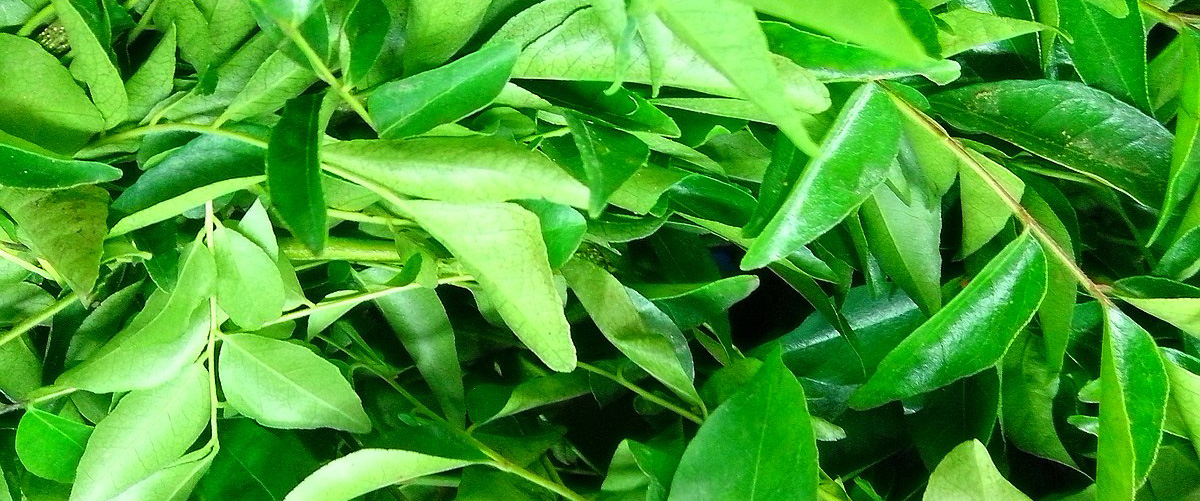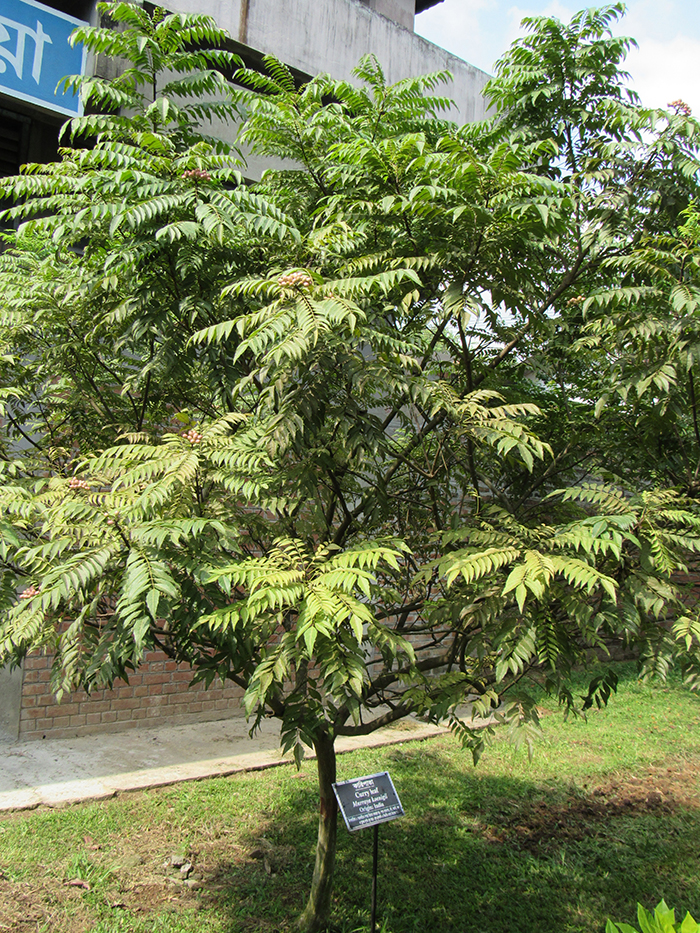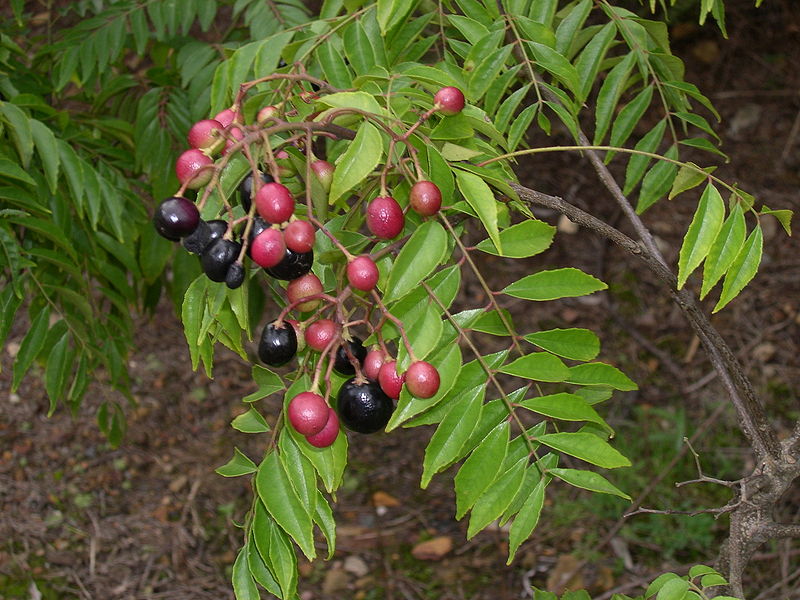Curry Leaf: The Versatile Wonder Plant
The Curry leaf is very integral to the culinary world of South India. Evidence for its usage can be found in Tamil Literature, between the 1st and 4th century CE, and in Kannada Literature, a few centuries later. In fact, the word ‘curry’ itself owes its origin to the Tamil word kari which is a term used for spicy sauces/gravies in the 16th century. Today it’s frequently referred to as kari-pattha. It is interesting to note that, during the reign of Richard II in the late 1300s, there is evidence of English cooks preparing curry!

Fresh curry leaves

Curry leaf tree
A small tree that grows to an approximate size of about 6 metres, the curry leaf plant is known for its rich foliage. It’s a tree full of pinnately arranged leaves. A rich, spicy and aromatic scent engulfs you when you walk past a blooming curry leaf tree. Found practically all over India, except the Himalayas, this tree doesn’t fare well in strong winds. Its branches tend to bend and break in windy conditions.
The curry leaf plant belongs to the citrus family and it produces small fragrant white flowers that become small, black, berry-like fruits. The fruit is edible, but the seed is poisonous and must be removed prior to use. Curry leaves are mostly used fresh – but they can be dried, powdered and stored too. In fact, in the good old days growing a curry leaf plant in the backyard was a must.

Curry leaf flower

Curry leaf fruit
In traditional South Indian cooking, the secret behind its definitive taste, aroma and presentation is primarily because of the curry leaf. When Indians and Sri Lankans started travelling and moving abroad, the curry leaf too travelled with them. The curry leaves began to make an appearance in markets abroad and in no time it was adopted into other cuisines as well.
Its Many Uses
The curry leaf is a perennial plant – it survives in the wild for approximately 2 years. Along with the leaves, the young tender shoots too are edible. The strong smell emanating from this plant repels bugs and pests from the garden. The flowers of this plant are also used commercially – dry flower arrangements, potpourris, wreaths and as a garnish too. The leaves of course are used as a garnish. Thus, the leaf goes into the preparation and is a part of the presentation of a meal too. The curry leaves double up as a vitamin supplement loaded with Vitamin A, B, C and B12, apart from being a source of Iron and Calcium. They are a fad as they help reduce weight naturally - eat them fresh on a daily basis and see the benefits! A ground paste of curry leaves helps in healing wounds, skin infections and burns. The essential oil extracted from this plant is used by perfumeries. Curry leaves can also stimulate hair follicles and promote growth of healthy strands. In addition, they can also help check premature greying. Regular consumption of curry leaves improves our brain power and helps keep Alzheimer’s disease at bay. The medical benefits of this essential oil range from the treatment of eczema, bronchitis, fever, varicose veins and also boosts liver function. Earlier, the curry leaf would remain on the plate long after the meal is over. However, today, with increased awareness, people do not hesitate to consume it.
An Exclusive Recipe of Curry Leaves
A cup full of fresh curry leaves (washed well)
Half a cup of grated coconut
2 green chillies
Mustard seeds – 1 tsp
Sugar – a pinch
Salt – to taste
Oil – 1 tbsp
Just splutter the mustard seeds in hot oil. Take the pan off the fire and add the curry leaves to it. Toss it all up. Once this combo cools, put it in a grinder, with the coconut, green chillies, salt and sugar. Grind well using a little water and it’s done! A very good add on with rotis, rice, dosas or idlis!

 Government of India
Government of India
































 Recognizing the ongoing need to position itself for the digital future, Indian Culture is an initiative by the Ministry of Culture. A platform that hosts data of cultural relevance from various repositories and institutions all over India.
Recognizing the ongoing need to position itself for the digital future, Indian Culture is an initiative by the Ministry of Culture. A platform that hosts data of cultural relevance from various repositories and institutions all over India.

